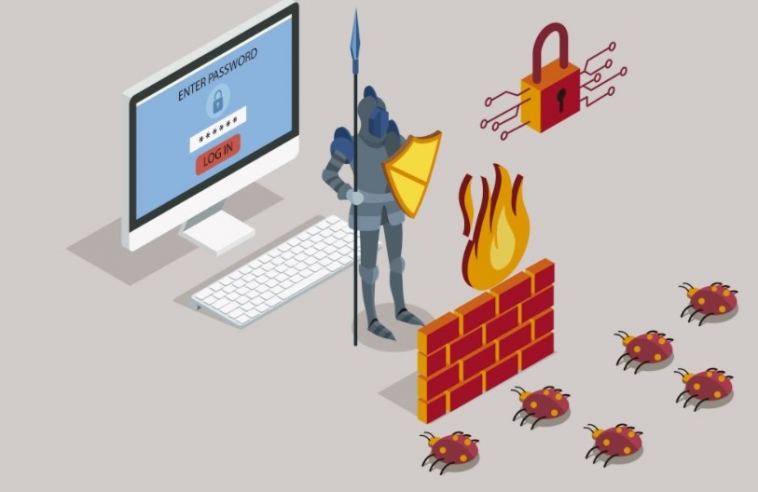- Like
- SHARE
- Digg
- Del
- Tumblr
- VKontakte
- Flattr
- Buffer
- Love This
- Save
- Odnoklassniki
- Meneame
- Blogger
- Amazon
- Yahoo Mail
- Gmail
- AOL
- Newsvine
- HackerNews
- Evernote
- MySpace
- Mail.ru
- Viadeo
- Line
- Comments
- Yummly
- SMS
- Viber
- Telegram
- JOIN
- Skype
- Facebook Messenger
- Kakao
- LiveJournal
- Yammer
- Edgar
- Fintel
- Mix
- Instapaper
- Copy Link
Cybersecurity has become a common topic in modern tech discussions, and rightly so. Many businesses have experienced a lot of cyber-attacks in recent years. The sudden increase in the rate of these crimes can be attributed to the ever-advancing technology.
Of course, the innovations and advancements brought to the table are aimed at increasing your overall application security. However, as experts work on this, cyber hackers are also trying their best to catch up with the new security patches. This idea can be scary for any business owner out there, but there’re ways for you to take responsibility for your own security. Read on to find out more!
Common Cyber Threats
You can’t protect yourself against something you don’t know much about. As such, it’s important to have some knowledge about what you’re actually facing. Most entrepreneurs hire IT professionals and don’t want to know what happens after that. Nonetheless, outsourcing such tasks doesn’t necessarily shift the responsibility from you.
Here are some of the most popular cyber threats that you must be aware of:
- Phishing
- Ransomware
- Weak passwords
- Employee negligence or errors
- Unauthorized access
1. Security Assessment
Now that you know what you’ll be dealing with, it becomes a lot easier to curate a strategy to curb these threats. Once you have this knowledge with you, you can go ahead and assess your current level of security. You can do this by yourself, but it’s always recommended that you secure the services of an experienced IT professional.
This way, you’ll be guaranteed more accurate results and will be in a better position to deal with the problem at hand. Once your selected expert has assessed the situation, they’re going to recommend the best solutions possible.
2. Staff Training
One of the most effective ways to deal with cybersecurity is to make sure that everyone is on the same page. Coming up with policies before training your staff members on how to implement them might not bare the desired results.
As pointed out earlier, weak passwords and unauthorized access are some of the main risks in the world of IT. These issues usually stem from ignorance and employee negligence. Inasmuch as it’s the employees’ responsibility to ensure the safety of whatever data they save, it’s also your job as a company to train them on relevant security procedures.
So, how should you train your workers? Well, one lesson that should be shared with all members is the importance of security. When one understands the importance of safeguarding their data, they’re likely to commit themselves to whatever policies the company puts in place.
One could have the strongest passwords but might be tricked by hackers into releasing crucial information. Therefore, it’s important that you teach your employees about phishing and social engineering. Make sure that they understand all possible tricks that could be used by today’s generation of hackers.
3. Update the Software Regularly
Once you have all the employees working towards the same goals, it’s upon you to create a conducive environment for the same. Hackers are always advancing their ways to break through the firewalls and access your data. As such, it’s important that you keep your systems updated with new software versions.
Every software developer, especially those focused on business-related applications, is committed to ensuring that their products are as safe as possible. Therefore, they occasionally release a version with more advanced security patches. By updating your system with these new features, you stand a better chance of protecting your resources from cybercriminals.
4. Set Up A Firewall
A firewall, as the name suggests, is a type of software that’s designed to regulate the data coming in and going out from your computer to the Internet. It’s more like a gatekeeper controlling all the traffic as you surf on your computer.
Firewalls are designed to prevent any suspicious entities from coming into your systems. As such, they protect your data from hackers or any unauthorized access. They also scan your network for any malware.
5. Secure the Hardware
People focus so much on installing sophisticated security software packages on their computers but forget about their hardware. Physically securing your computer system on the desks is an underrated measure when it comes to cybersecurity.
Locking the hardware on the desks ensures that your gadgets are safe even when an intruder gains access to the room. It’s also important to keep any external storage devices like flash disks and memory cards in the lockers.
6. Encourage Multi-Factor Authentication
Although passwords provided the necessary security, there’s still a risk of leaking them. When one gets hold of your password, then there’s little you can do to prevent them from accessing your data. Well, changing your current passphrase could be an option, but that might not be quick enough to solve the problem.
Fortunately, there’re new ways to counter such issues. Multi-factor authentication (MFA) has proven to be one of the best options and can be used together with your passwords. Once you start the login process, a code will be sent to your phone as the final step of authentication.
MFA works best if you’re trying to strengthen your cloud storage security because it’s quite difficult to supervise those working away from the office. When one wants to access a given set of data remotely, the one-time code sent to their phone will act as the best authentication mechanism.
Conclusion
The security of your company’s data is very vital. There’s no denying the heavy implications that a cyber-attack could have on your business. To ensure top-notch security, you could start by training your staff so that they understand the significance of their actions.
Upgrading your systems and update the software to the latest versions will strengthen your security. As you do so, don’t forget to lock your hardware on the office desks. Also, ensure that you set up a firewall to prevent any suspicious activities on your computer or network. Another effective feature that you should add to your system is the multi-factor authentication process.


